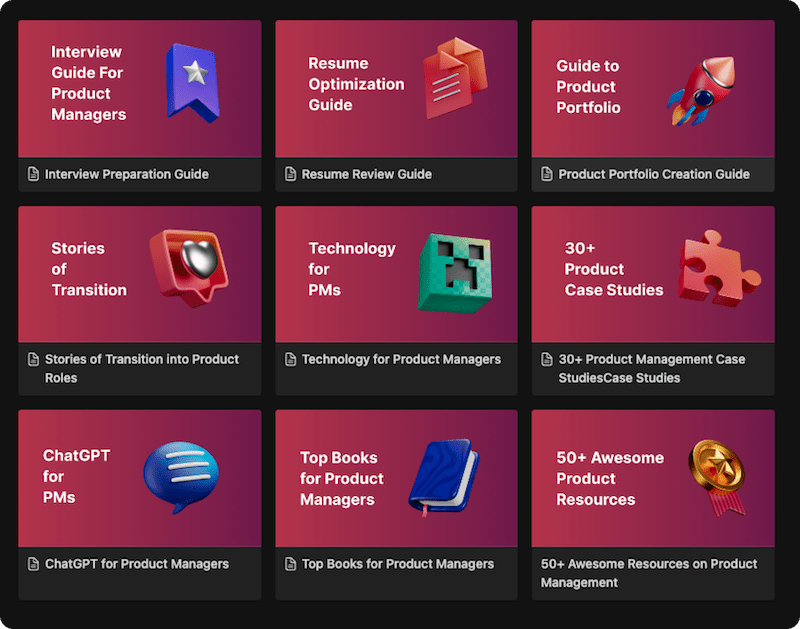Have you ever wondered why some products explode onto the scene and then vanish, while others, like Coca-Cola, seem to last forever? As a product manager, you’re not just responsible for launching a product; you’re the steward of its entire journey. How do you decide when to invest in marketing, when to add new features, or when it’s time to pivot or even sunset a product? The answer lies in understanding one of the most fundamental concepts in business: the Product Lifecycle Stages.
This comprehensive guide will turn you from a beginner into a master of the product lifecycle. We’ll break down each stage in simple terms, explore the strategies you need to succeed, and look at real-world examples. By the end, you’ll have a powerful mental model to guide your product strategy, make smarter decisions, and maximize your product’s success from cradle to grave.
Definition & Origin: A Foundational Theory
The concept of the product lifecycle was popularized by German-American economist Theodore Levitt, who published a seminal article, “Exploit the Product Life Cycle,” in the Harvard Business Review in 1965. Levitt’s model proposed that, like living organisms, products have a finite lifespan characterized by distinct stages: Introduction, Growth, Maturity, and Decline.
Today, many models have expanded this to include a crucial preliminary stage: Development. Understanding these five stages is key to effective product management.
Benefits & Use-Cases: Why This Model is a PM’s Best Friend
Understanding the product lifecycle isn’t just an academic exercise. It’s a powerful tool used by product managers, marketers, and executives to:
- Make Strategic Decisions: The model provides a framework for deciding on pricing, marketing spend, market expansion, and feature development.
- Forecast Sales and Revenue: By identifying the current stage, companies can make more accurate predictions about future performance.
- Optimize Resource Allocation: Knowing when to invest heavily (Growth) versus when to harvest profits (Maturity) helps in managing budgets effectively.
- Manage Risk: It provides an early warning system for market saturation or declining demand, allowing for proactive rather than reactive responses.
- Align Teams: It gives a shared language and framework for marketing, sales, product, and support teams to work towards common goals appropriate for each stage.
A Step-by-Step Guide: The 5 Product Lifecycle Stages
Let’s walk through each of the five stages, exploring the key characteristics and the strategic focus for each one.
Stage 1: Development
This is the “incubation” stage, where the product exists only as an idea or a prototype. It’s a period of intense research, validation, and engineering before the product ever sees the light of day.
- Sales: Zero. The product is not yet on the market.
- Costs: High. Significant investment in R&D, market research, and testing with no offsetting revenue.
- Profits: Negative.
- Strategic Focus:
- Market Research: Validating the problem and the solution.
- Prototyping & MVP: Building a Minimum Viable Product to test core assumptions.
- Securing Funding: Acquiring the necessary capital for development and launch.
- Building Awareness: Pre-launch marketing and generating initial buzz.
Stage 2: Introduction
The product is launched! This stage is all about establishing a beachhead in the market and building initial awareness. It’s often the riskiest and most expensive stage.
- Sales: Low and slow. Customers are just beginning to discover the product.
- Costs: Very high. Marketing and promotional costs are at their peak to build awareness and drive trial.
- Profits: Negative or very low due to high costs and low sales volume.
- Strategic Focus:
- Pricing: Often uses cost-plus pricing or penetration pricing to gain market share.
- Marketing: Focus on early adopters and creating brand awareness.
- Distribution: Securing initial distribution channels.
- Feedback: Gathering early customer feedback to iterate on the product.
Stage 3: Growth
If the product survives the introduction stage, it enters a period of rapid growth. The market has accepted the product, and sales begin to take off.
- Sales: Rapidly increasing. Word-of-mouth spreads, and market share expands.
- Costs: Average. Costs per customer decrease due to economies of scale.
- Profits: Rising and reaching their peak.
- Strategic Focus:
- Marketing: Shift focus from awareness to brand preference.
- Product: Adding new features, improving quality, and offering support services.
- Distribution: Expanding distribution channels to reach a wider audience.
- Pricing: Maintaining prices as demand increases.
Stage 4: Maturity
This is typically the longest stage. The product’s sales growth slows down, and it reaches its peak. The market is saturated, and competition is intense.
- Sales: Peak and then stabilize. Most potential customers have already adopted the product.
- Costs: Low. Production and marketing are efficient.
- Profits: High but may start to decline due to increased competition and pricing pressure.
- Strategic Focus:
- Differentiation: Emphasizing new features, branding, and customer service to stand out.
- Pricing: Prices may be lowered to defend market share against competitors.
- Market Expansion: Exploring new market segments or demographics.
- Efficiency: Maximizing efficiency to maintain profitability (harvesting).
Stage 5: Decline
Eventually, sales for most products begin to fall. This can be due to technological advancements, changes in consumer tastes, or increased competition from superior alternatives.
- Sales: Steadily decreasing.
- Costs: Continuing to fall.
- Profits: Declining.
- Strategic Focus:
- Harvesting: Reduce marketing spend and costs to maximize remaining profit (e.g., VCRs in their final years).
- Divesting: Sell the product or brand to another company.
- Sunsetting: Discontinue the product and focus resources elsewhere.
- Reinvention: Sometimes, a product can be reinvented, pushing it back into the growth stage (e.g., Apple’s pivot with the iMac).
Mistakes to Avoid
- Misidentifying the Stage: Applying a growth-stage strategy to a mature product can be a costly mistake.
- Ignoring Competition: Failing to react to competitive moves, especially in the maturity stage, can accelerate decline.
- Not Planning for Decline: Many companies hold on to declining products for too long, draining resources that could be used for new innovations.
- Forgetting to Innovate: A product can stay in the maturity stage longer with continuous improvement and innovation.
Examples & Case Studies: The Lifecycle in Action
[Visual Asset Prompt: A table comparing 3-4 products (e.g., iPhone, Netflix, Typewriter, Coca-Cola) and mapping their characteristics and strategies across the 5 product lifecycle stages.]- The iPhone (Growth to Maturity): The original iPhone had a classic Introduction and explosive Growth. Today, the smartphone market is in Maturity. Sales growth has slowed, competition is fierce (Samsung, Google), and Apple focuses on differentiation through new features (camera, processor) and services (iCloud, Apple Music) to maintain its dominant market share.
- Netflix (Maturity & Reinvention): Netflix’s original DVD-by-mail service went through the entire lifecycle, entering Decline as technology shifted. However, Netflix brilliantly reinvented itself with streaming, entering a new, massive Growth phase. Now, the streaming market itself is in Maturity, with intense competition from Disney+, HBO Max, and others, forcing Netflix to focus on original content and international expansion to defend its position.
- The Typewriter (Decline): A classic example of a product in the Decline stage. The advent of personal computers and word processors made typewriters obsolete. The few that are still sold cater to a tiny niche market.
Related Concepts & Comparisons
Product Lifecycle vs. Product Management Lifecycle
It’s easy to confuse the Product Lifecycle with the Product Management Lifecycle. They are related but distinct concepts.
- Product Lifecycle: An external, market-facing model describing a product’s sales journey over time (Development -> Introduction -> Growth -> Maturity -> Decline).
- Product Management Lifecycle: An internal, process-oriented model describing the steps a product manager takes to develop and ship features (Discover -> Define -> Develop -> Deliver/Deploy). This is a cyclical process that happens repeatedly within each stage of the broader Product Lifecycle.
- For example, during the Maturity stage, a PM might run through several Product Management cycles to develop new features aimed at retaining customers.
Common Mistakes to Avoid
- Misidentifying Your Stage: Being overly optimistic and thinking you’re in Growth when you’re still in Introduction can lead to premature scaling and wasted resources.
- Ignoring the Decline Stage: Holding onto a declining product for too long can drain resources that could be better invested in new, developing products.
- A “One-Size-Fits-All” Strategy: Applying growth-stage tactics to a mature product (or vice-versa) is a recipe for failure.
- Failing to Innovate at Maturity: The maturity stage is not a time to rest. It’s the perfect time to explore extensions, improvements, or even plan for the product’s successor.
Conclusion: From Theory to Action
The product lifecycle stages are more than just a theoretical model; they are a powerful strategic compass for any product manager. By accurately diagnosing where your product is on its journey—from the hopeful beginnings of Development to the strategic exit of Decline, you can make smarter, more timely decisions. You can align your team, optimize your spending, and navigate the competitive landscape with confidence.
This framework empowers you to ask the right questions at the right time. Are we building awareness or defending our turf? Is it time to add features or simplify our offering? Should we invest more or harvest the returns? The answers lie in understanding your product’s current lifecycle stage.
FAQ’s
The five stages are Development (pre-launch research and creation), Introduction (market launch with low sales), Growth (rapid sales increase), Maturity (sales peak and plateau), and Decline (sales begin to fall).
Yes, this is possible through “extension strategies.” A product in the Maturity stage can be pushed back into the Growth stage through significant innovation, finding a new market for the product, or a major rebranding campaign. For example, the baking soda brand Arm & Hammer extended its life by promoting new uses like deodorizing refrigerators.
The model was first popularized by German-American economist Theodore Levitt in a 1965 Harvard Business Review article. He conceptualized the product’s journey through four key market stages.
There is no fixed duration. The length of each stage varies dramatically depending on the product, industry, technology, and competitive landscape. Some fad products might go through the entire cycle in a few months, while staple products like Heinz Ketchup can remain in the maturity stage for decades.
Not necessarily. While it signals the end of a product’s reign, a well-managed decline can still be profitable. By cutting costs and “harvesting” the product, a company can extract final profits from a loyal customer base and wisely reallocate those resources to the next generation of products.
Learn better with active recall quiz
How well do you know What are Product Lifecycle Stages? Let’s find out with this quick quiz! (just 10 questions)


